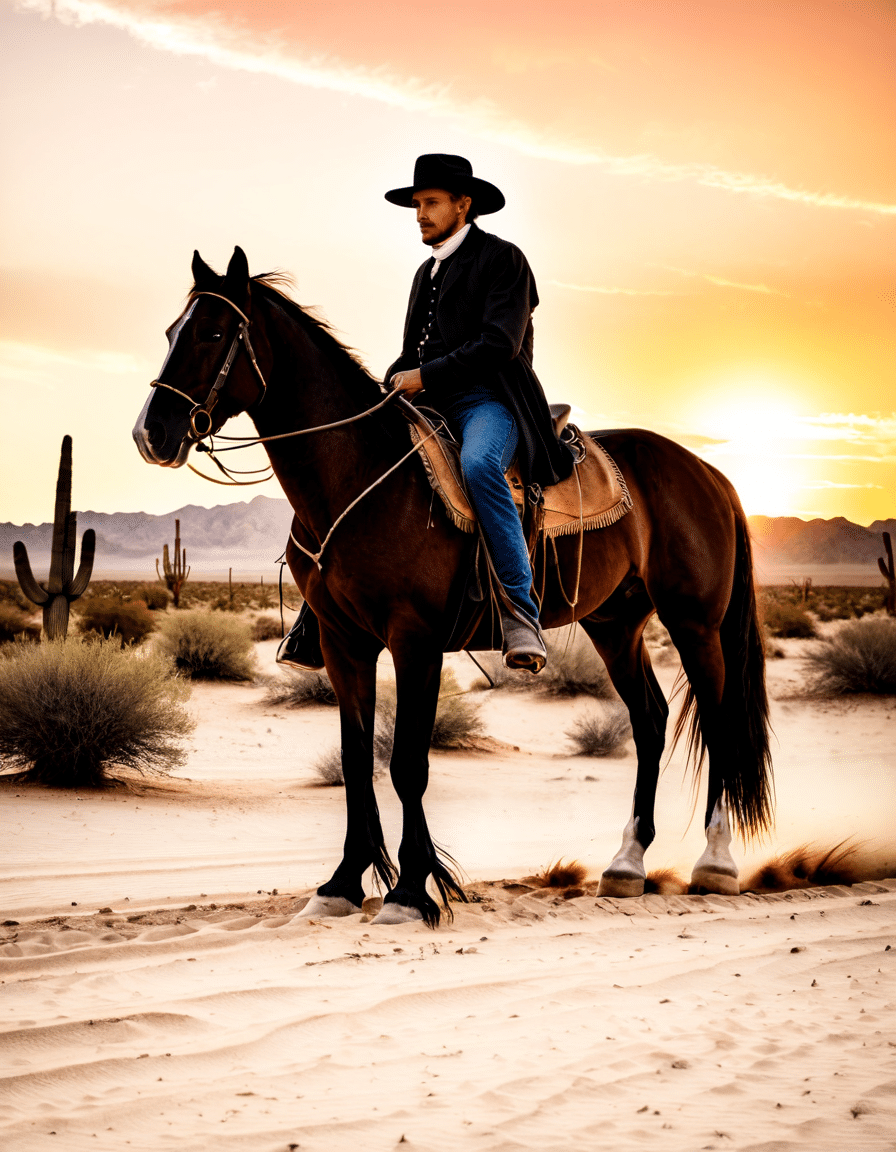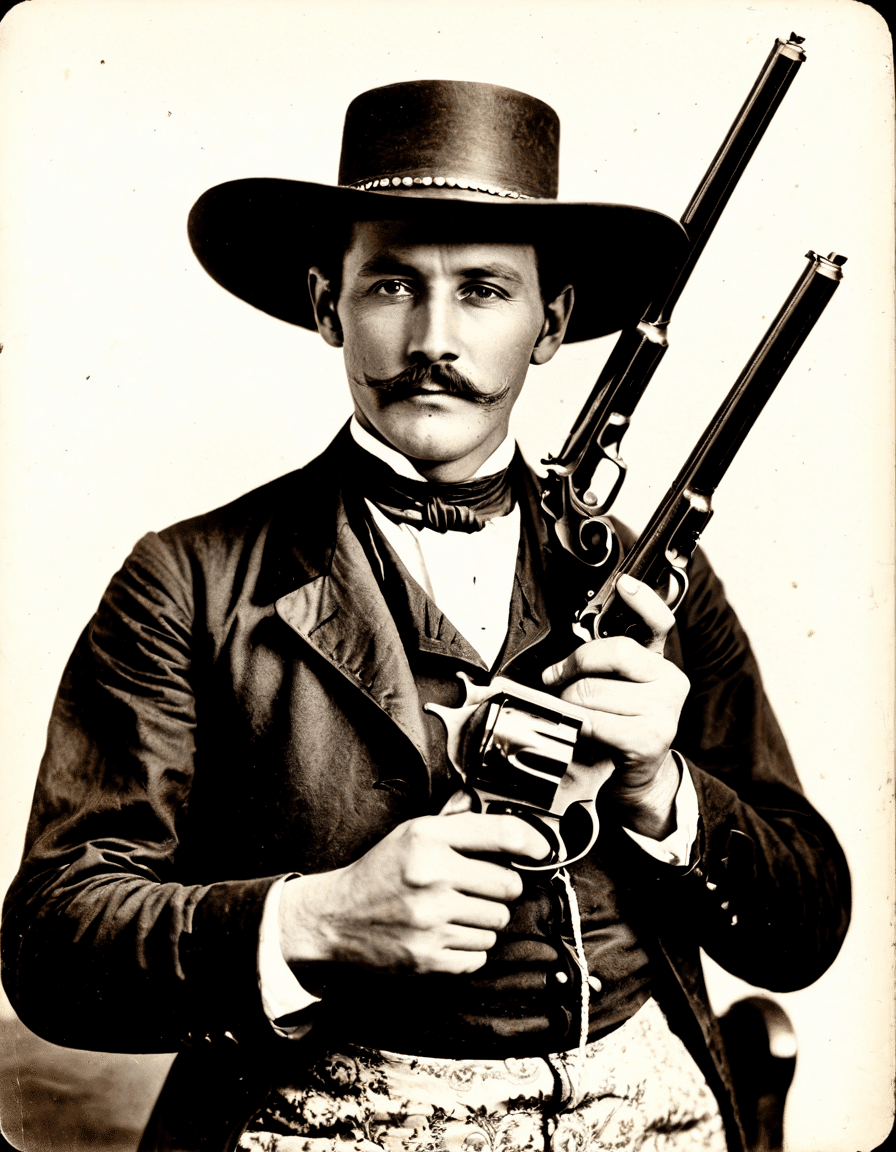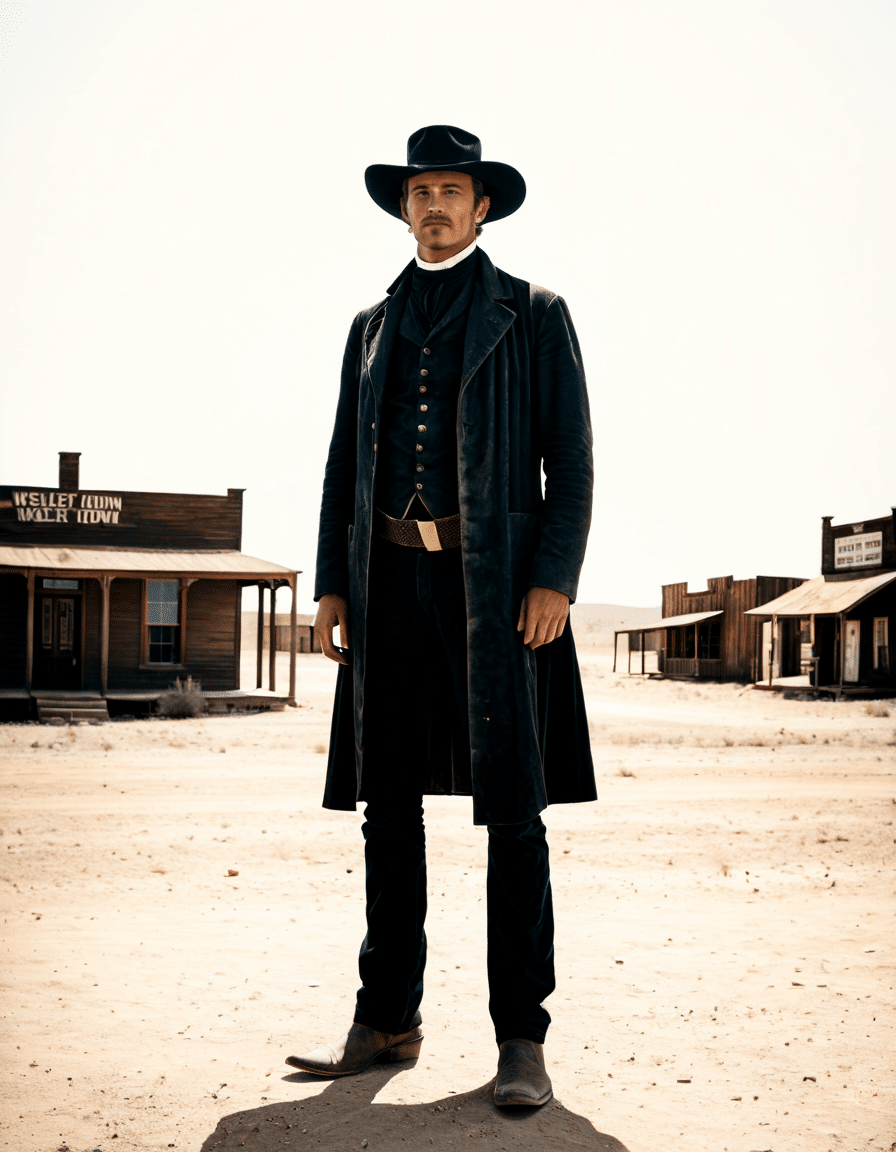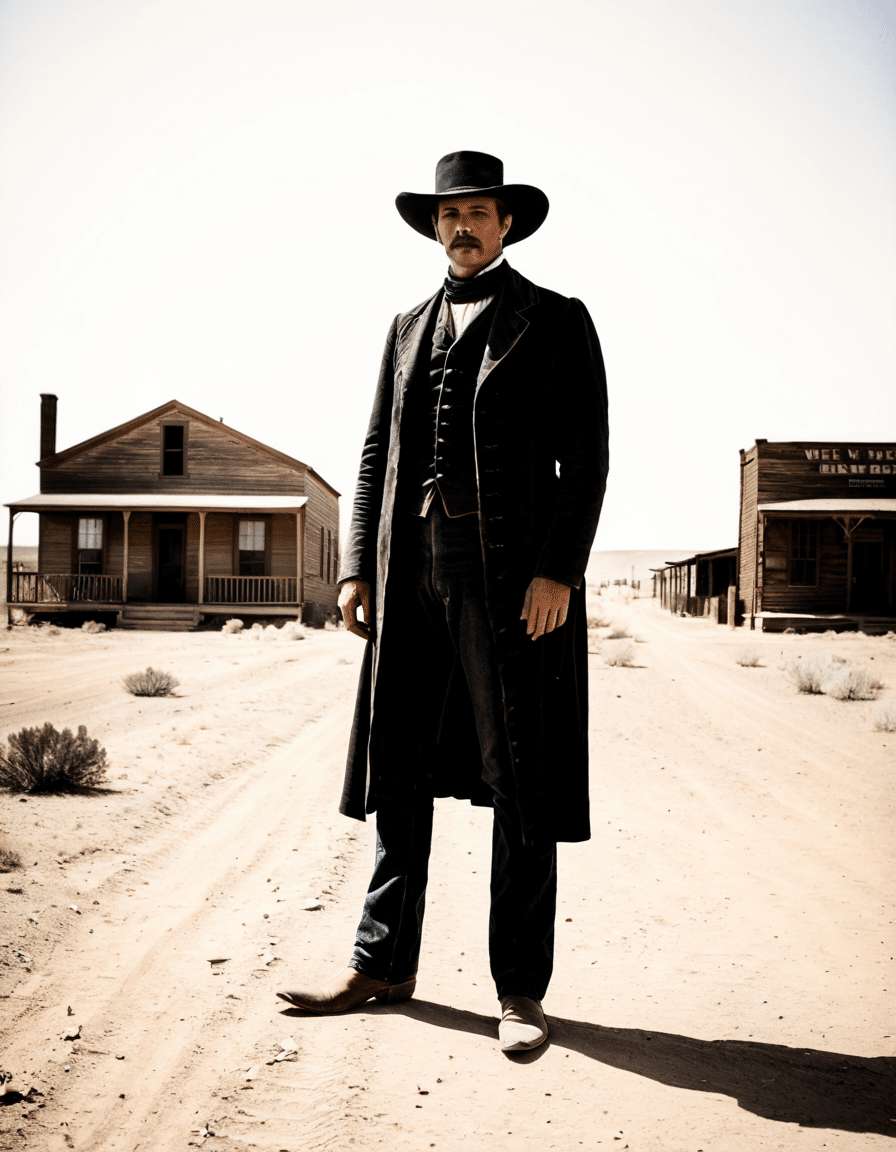
John Wesley Hardin The Infamous Gunfighter’s Legacy
John Wesley Hardin, the bold and brash gunfighter of the American West, is a name that sparks intrigue and controversy. Born in 1853 in Bonham, Texas, his life was steeped in violence and infamy. Despite being raised in a well-off family and educated, Hardin’s fiery nature led him down a dark path. He’s often flanked by claims of killing up to 27 men, blurring the lines between legend and reality. In this piece, we’ll dive deep into Hardin’s life, his legendary gunfights, and the cultural influence he continues to wield in cinema and literature.

The Life of John Wesley Hardin: Facts and Fiction
John Wesley Hardin’s early life was seemingly promising. He was born into a prosperous family, and his education hinted at a future in law. Yet, a fierce temper and a thirst for violence turned his ambitions upside down. By the age of 15, Hardin had already killed his first man, an act that seemed to set the tone for his tumultuous life.
While he claimed his reasons were often rooted in self-defense, many of his actions were driven by a deep-seated pride and a desire to prove himself. The reality is stark: Hardin’s path was paved with a series of violent encounters that could easily fill the pages of a sensational novel. His notoriety extended far beyond Texas; it reached the ears of lawmen and outlaws alike, perpetuating the myths that surrounded his character.
The stories of John Wesley Hardin’s life often venture into the realm of fiction, where the lines between heroism and villainy blur. Biographers and historians argue about the number of men he truly killed, with Hardin himself inflating his numbers in an audacious display of bravado. This intertwining of fact and fiction adds to the allure of his legacy, posing questions about the nature of fame and the American mythos.

Top 7 Gunfights that Defined John Wesley Hardin’s Infamous Reputation
The Cultural Impact of John Wesley Hardin on American Cinema and Literature
John Wesley Hardin’s legacy hasn’t just lingered in dusty history books; it’s alive in film and literature. He’s been depicted in various forms, from classics like the 1958 film “Man of the West” to modern shows like “Deadwood,” which portray the unvarnished realities of cowboy life. Each portrayal provides unique insights into the Wild West and its gun culture.
These adaptations often delve into Hardin’s character, showcasing the violent yet charismatic nature that both captivated and horrified society. His legacy prompts filmmakers to explore themes of justice, morality, and the thin line separating heroism from villainy. The character of Hardin serves to illustrate broader societal issues, revealing the dark underbelly of the American dream.
Through his representation in pop culture, Hardin acts as a lens through which contemporary audiences examine their perceptions of violence and justice. His life ignites debates about masculinity, the law, and the consequences of a gunfighter’s life. The narratives shape viewers’ understanding of the American West and fuel ongoing discussions about the mythologizing of such figures in our collective memory.
The Historical Analysis of John Wesley Hardin’s Legacy: Fact vs. Fiction
The historiography surrounding John Wesley Hardin is a rich tapestry woven with fact, fiction, and fascination. Historians grapple with the veracity of Hardin’s claims about his kills, particularly the infamous number of 27. The sources that chronicled his life—the newspapers of his time, personal diaries, and later biographies—often painted a sensationalized picture, leading to varying interpretations of his true legacy.
While many historians agree Hardin was undoubtedly a violent man, the scale of his infamy often raises eyebrows. His life became a case study in how narratives evolve over time, from sensational news stories to broad romanticizations in film. This desire to mythologize reflects both society’s fascination with outlaws and our hunger for tales that echo with moral ambiguity.
As researchers delve deeper into archival materials and contemporary retellings, the interpretations of Hardin shift and reshape. Scholars dissect how media, from newspapers to films, contributed to his legendary status. The enduring interest in John Wesley Hardin speaks to the broader struggles of American identity—how we grapple with our past and how the tales we choose to tell shape our understanding of justice.
Revisiting the Infamous Legacy: Modern Perspectives on John Wesley Hardin
Fast forward to today, and John Wesley Hardin remains as pertinent as ever in discussions surrounding violence and the cultural construction of masculinity. His life serves as a starting point for filmmakers and authors who reflect on the implications of being a gunfighter in a lawless society. Interviews with contemporary creators illustrate Hardin’s persistent allure. They explore what his character teaches us about justice and morality.
Modern storytellers craft narratives that examine not just the gunfights but the personal struggles Hardin faced. They delve into his relationships, motivations, and moral complexities, offering a richer portrait of the man behind the myth. This renewed focus invites audiences to reconsider not just Hardin’s legacy, but the very nature of violence and redemption.
As culture continues to evolve, the legacy of John Wesley Hardin continues to resonate, inviting reflection on our societal values. His life story emphasizes that the glory associated with gunfighters often is accompanied by tremendous sorrow and loss. The examination of Hardin’s life remains a powerful reminder of America’s ongoing dialogue with its past, as we seek to understand the legacies we inherit and how they inform our future choices.
Ultimately, John Wesley Hardin embodies the contradictory nature of American frontier life—a vivid symbol of the battles between pride, violence, and the relentless pursuit of identity. His legacy, steeped in blood and legend, guarantees that his story will continue to shape our understanding of the Old West and transcend into the untold narratives of contemporary cinema and literature.
In the end, grappling with figures like Hardin invites us to reflect on the collective tales we tell about our past and the legacies we choose to carry forward. His myth and reality open a larger conversation about morality, justice, and how we interpret the idyllic yet chaotic frontier that shaped America.
John Wesley Hardin: A Look at the Infamous Gunfighter’s Legacy
A Colorful Life
John Wesley Hardin was no stranger to controversy. By the age of 27, he was already linked to a staggering 20 murders, establishing a fearsome reputation in the Wild West. What might be even more surprising is that he was a prolific gambler, often indulging more in games than gunfights. Imagine him as the fairy godmother Shrek of poker tables—charming yet deadly! His time spent in Texas was punctuated with brawls that could rival any modern selling sunset season 7 drama you might see today. For Hardin, life was a constant game of chance where stakes were not just monetary but often life and death.
Quirky Facts
While Hardin’s legacy is built on violence, he also had a softer side that might surprise you. He was known for his love of poetry and literature, often reciting verses to entertain friends. In one such instance, followers speculated that his Passions were akin to the complicated relationships seen in shows like “passions. However, his flare for the dramatic didn’t stop him from writing a personal diary, a practice rare for men of his time, which one could imagine every entry resonating with the phrase wait a minute as he reflected on his life’s tumultuous path.
The Final Act
Hardin’s life came to an untimely end when he was shot dead in 1895 in a saloon. This gunfighter’s flair for the theatrical is echoed in many contemporary tales—much like the storied legacy of figures like Jessica Simpson, who has seamlessly transitioned from pop star to business mogul. What’s more, his endeavors remind us of the ruthless nature of power plays, which can be compared to the high-stakes tension found in characters like Loras Tyrell—charming, yet dangerous in their pursuit of dominance. As the dust settled in the wake of his death, Hardin’s legend only grew, leaving a long shadow that still fascinates historians and filmmakers alike, capturing the essence of Longshanks from legendary stories, who often left audiences hungry for more.










